- Home
- Alex Scarrow
TimeRiders: The Infinity Cage (book 9) Page 29
TimeRiders: The Infinity Cage (book 9) Read online
Page 29
CHAPTER 51
1890, London
Liam studied the screen. ‘How big a space are we looking at?’
> If it is one continuous void, then it is 270 feet long, 190 feet wide and 57 feet high.
‘It’s big, but, if I’m looking at that right, it’s not a circular space like the other one.’
‘The shape of the chamber may be an irrelevant detail. The engineers who constructed the other beam created a circular chamber to reflect the geometry above it.’
Liam understood what Bob was getting at; they may have been wary of creating a void that would look too much out of place, particularly if at some point down the line someone started conducting seismic surveys.
> This void is significantly deeper than the other one. A greater attempt has been made to conceal it.
‘Because it’s bang in the middle of one of the oldest cities in the world … I can see why they’d want to place it deeper. Computer-Bob, can we open a pinhole in there and get a look?’
> Affirmative. Where do you want to locate the pinhole in this void?
‘Somewhere in the middle?’
‘Caution.’ Bob pointed at the screen.
They were looking at a theoretical 3D model of the ground beneath the temple compound. It had taken computer-Bob most of the day and well into the evening to lightly probe and probe again in a densely plotted grid pattern. Liam had watched the model slowly build up in detail on one of the screens as the density information from each new probe added to the sum total of what lay down there beneath the temple. He could see a wire-frame outline that looked like it might represent the steps he’d descended beneath the building. And this model confirmed what he’d said; there was what appeared to be an endless labyrinth of passages and stairwells, catacombs and sewers descending down into this giant slab of bedrock. A porous, sponge-like mass of spaces carved by those who had lived on this rock long before the city became known as Jerusalem. According to Sir Richard F. Barton’s book, the giant slab of bedrock on which the city was perched had probably been occupied by humans as far back as the Bronze Age, as long as 15,000 years ago. Liam wondered if the transmitters’ engineers had even gone back as far as that in order to hollow out the space they needed to install their device.
‘I suggest we open a pinhole away from the centre. If a tachyon beam is now active and, like the other transmitter, located in the middle of the void, the pinhole will open within the beam.’ He turned to Liam. ‘They may detect that.’
‘They?’ Liam grinned skittishly. ‘And here we are still having no bleedin’ idea who “they” are. I do hope they’re nice and friendly and don’t mind someone having a little peek.’
He turned to the screen. ‘All right, let’s put the pinhole up high and discreet in one of the corners. How about that?’
> Affirmative. Displacement machine has sufficient charge to proceed.
‘Right then.’ Liam rubbed his hands together. ‘Let’s take a look.’
> Beginning …
Liam and Bob patiently watched a screen to the right. In one small window, a scrolling density-scan display was showing a relentlessly flat line. It quivered for just the briefest moment.
‘The pinhole is being opened,’ said Bob.
Then another window popped open on the monitor. Pixels began to appear, column after column, from the left. Black and featureless pixels showing nothing at all, until the very last column; they could see the faintest vertical line of grey pixels.
‘What’s the line?’
Bob shook his head.
‘Damn it … it was just starting to get interesting. Can we do another pinhole? Move it along a few feet, and turn it a bit more to the right so we can centre on that line?’
> Affirmative.
They waited again, saw the density scan wobble slightly. Then once more another image began to build itself on the monitor, stripe by stripe from left to right.
‘Oh … my … God …’ Liam slapped the edge of the desk. ‘I think we got something this time!’
A vertical stripe of pure white ran midway across the image. At the bottom of the stripe there were some grey pixels pooling on either side of it.
‘Those pixels could be light reflected,’ said Liam. He looked at Bob. ‘A shiny, smooth floor maybe? Just like the other one?’
‘Yes, it could be.’
‘Computer-Bob, can we do another one with more detail?’
> I can do a higher-resolution image.
‘Can you make it any lighter?’
> No.
‘Can you move in any closer?’
> Of course. I can locate the pinhole closer to the centre of this void.
‘We must be cautious now, Liam,’ said Bob. ‘The chamber may not be deserted as the other one was. There may be sensors … they may be able to detect a burst of particles if we do this too many times or too closely.’
> Bob is correct. We increase the chance of broadcasting our presence.
‘Let’s just do it,’ Liam said impatiently. ‘I need to see more than a white line.’
> Affirmative. Proceeding …
Once again the density display fluctuated, then another image began to build itself strip by strip on the screen. This time more slowly. The pixellation was gone. Now they were looking at a grainy image instead of a blocky one.
Liam leaned forward and stared intensely at the screen. ‘The light … that’s definitely another one of those beams.’ He squinted. ‘Computer-Bob, can you make that bigger?’
> I will maximize the image.
The entire screen was filled by the dark and grainy image file. Liam could see the glowing beam was spilling from an opened section of a vast cylindrical structure that extended out of the picture, presumably as the one in the jungle had done, all the way up to the ceiling.
‘Can you zoom in some more on the cylinder?’
The image shuffled in steps, expanding and growing in size, becoming blurrier, grainier. He squinted as he stared at what appeared to be the faint lines of hundreds of palm-sized symbols on the smooth surface.
‘It’s the same thing, isn’t it? Exactly the same?’
Bob nodded. ‘It appears to be.’
‘Zoom back so it’s all on the screen again, please, computer-Bob.’
> Affirmative.
The image shuffled back out again. Liam studied the glowing light. Just like the other transmitter, it was featureless and white, a sliver of chaos space. The floor at the base of the column reflected the glow – a wedge of light that spread out across the smooth surface and eventually petered out into darkness. But there was something else there, just about caught by the furthest reach of light. The faintest blur of something hiding right on the cusp of being lost in darkness.
‘What’s that? There … bottom left-hand corner of the image?’
> I see something.
‘Zoom in on it, will you?’
Once again the image jerked as it expanded in steps. The grey smudge shuffled to the centre of the image as computer-Bob zoomed in on it.
‘That’s … that’s some kind of a face, isn’t it?’ Liam leaned across the desk and studied the faint, ghostly image: an oval with a distinctly pointed bottom, quite possibly the sharp line of a chin. Two dark pools that might just be the orbits of deeply sunken eyes. And – if that oval was indeed a head – then, just above it on the side nearest the light, a solitary pixel hinted at some kind of short stubby protrusion emerging from its forehead.
‘Are we looking at one of … them?’
‘If that is a face, Liam, then … it appears to be looking directly at the pinhole.’ Bob leaned down beside him, both of their faces now glowing from the cool spill of light from the computer monitor. He turned to Liam. ‘Which appears to suggest … they now know they are being watched.’
A chill ran down Liam’s spine and brought goosebumps out along his forearms.
He nodded. He reached out and traced his finger slowly along more of the blurry pixels. He thought h
e could make out the line of a long bare neck, a lean naked shoulder … and, slightly fainter, something just visible peeking over the top of the shoulder, the ghostly outline of what looked just a little bit like a wing.
Bob turned to Liam and cocked a thick coarse brow.
‘Uh-huh. I know what you’re thinking, Bob.’
I don’t believe in this kind of thing … there aren’t angels in the clouds or devils with pitchforks deep underground. What I’m looking at is a grey pixel. That’s it. Nothing more.
‘What next, Liam?’
He stood up, stepped back and took a deep breath. ‘It looks like they’re there. Or one of them is.’
Bob nodded.
‘I, uh … all right, I wasn’t actually expecting to find someone home.’
‘Liam, we know there’s a beam here. We know exactly where it is. That was our original mission objective, to confirm the precise location of the other transmitter. We should wait until Maddy returns, then –’
‘Or –’ he looked at Bob – ‘we can make contact.’
‘If we wait, there will be more of us.’
‘Strength in numbers, huh?’
‘Correct.’
Liam shook his head. ‘Do you honestly think five trespassers instead of two are going to make any difference to the people who made something like this?’
Bob scowled.
‘If we’re not welcome … I’m sure they’ll do us in just as easily, five or two. And …’ He spread his hands. ‘Maybe two will look a bit less threatening?’
‘I recommend we wait until the others have returned.’
‘And whoever that is standing down there … he might just be leaving.’ Liam pursed his lips. ‘I want to talk to him. I’ve got a million bleedin’ questions I want to ask him. I think we should make contact.’
CHAPTER 52
2070, W.G. Systems
Denver Research Campus
Waldstein led them up one level to his personal floor and into his capacious office. They approached a section of wall lined with faux mahogany wood panelling and shelves laden with antique-looking leatherbound books and old collectors’ editions from the beginning of the twenty-first century.
Maddy read their spines: Harry Potter and the Sorcerer’s Stone. She recognized that one. Fifty Shades of Grey. Not that one, though.
‘I know it’s something of a cliché from old Frankenstein movies, but sometimes it’s the oldest ideas that are the best.’ He pulled a book out at head height, revealing a dull red light that flickered. ‘Roald Waldstein. Password: Klaatu barada nikto …’ He turned to Maddy. ‘Facial recognition, voice recognition and, as a final back-up, a good old-fashioned, honest-to-God password.’
They heard a soft humming from behind the books that ended with an anticlimactic dull click.
‘Oh,’ said Maddy with a hint of disappointment. ‘I was expecting the whole bookshelf to swing in majestically, or rise up … or something.’
Waldstein laughed softly. ‘It would be nice, but a little less subtle … and perhaps a movie cliché too far for me.’ He gently pushed at a section of the bookshelf and it swung inwards. Beyond was a short dark passage with another door at the far end, beside it another dully glowing red light.
‘Same again?’ said Maddy. ‘Face recognition, voice recog–?’
‘No, that’s just a safety light I had installed so I don’t trip over and break my neck in here.’ He pointed at their feet. ‘Mind the small step down there.’ He took a pace forward and down and pushed the second door inwards.
It swung open into a dark space. Light strips on the ceiling began to flicker and blink on, like lazy fireside lapdogs stirring after too long a sleep. ‘Welcome to my inner, inner sanctum.’
He led them into a modestly sized room with a low ceiling and one small window that looked out across the cold, bare, lifeless mountains. ‘Or … I suppose we could call this the headquarters – mission control – of our humble little agency.’
A cluttered space. Several desks and chairs within it, and a number of computer terminals and power cables snaking across the floor. On one wall was a corkboard covered with photographs. Pictures of houses and suburban streets, of mementoes, childhood toys, family gatherings. Maddy wandered over towards it. The pictures were grouped: one set for her, one for Liam, one for Sal.
Liam’s were all sepia-coloured: a montage of grainy images of Cork in Ireland, of a port town, of a church-hall school and schoolboys wearing cloth caps and funny shorts. Fishing boats and nets. Pictures of the Titanic below decks. The stewards’ quarters.
Sal’s were of Mumbai, high-resolution images in saturated colour: her home, family, neighbourhood. Photographs taken by a real girl who had documented much of her life on social media. A girl whose memories had been borrowed en masse; a girl who’d died not long after her fifteenth birthday.
And then, as Maddy walked along the corkboard, there were her memories pinned to the board.
My God …
She was looking at a picture of her messy bedroom. There were all her childhood things: a Rubik’s cube, an EAZY STARTZ electronic kit, her Meccano sets, her Lego Technic. And one token gesture that she’d been a girl not a boy: a doll’s house. But even then there was camo netting strung across it and badly painted Warhammer figures fighting it out in the flower bed. Beside that was a photo of the front of her house, the porch, the green door. Her street. Her high school. Friends she thought she’d once had. Family …
‘I’m sorry,’ said Waldstein. ‘I forgot all those pictures were still pinned up there.’
She took a step back from it. ‘That’s my life in pictures. My entire life … right there.’
‘They’re seed memories, Maddy. Just enough images … and smells, sounds and other sensations that your mind subconsciously stitched together to build a life narrative.’ He came over and stood beside her at the board. He tapped a picture of a class of eighth-grade students. ‘We gave you this … and your mind built a fictional story of six whole years of high school. It’s what we do when we dream … We add together all the random firing of neurons when we’re in deep sleep, and as we begin to wake we assemble them into a story.’
She shook her head. ‘I know it’s all … fake, all of this, but … it feels like I can actually remember these photographs being taken. Remember every one of these moments.’
‘Joseph Olivera made your story, Maddy. As he made Liam’s and Sal’s. He was one of the best synthetic neurological programmers in the world. Come on.’ He put his hand on her shoulder. ‘Your life isn’t those photographs; your life is what you and Liam and Sal experienced together. And, I assure you, you’ve seen and done so much more than any normal person would have in a whole lifetime.’
He led her away from the board towards the desks and computers. ‘This is where I designed and tested the second-generation displacement machine. Where my colleague Griggs designed, coded and tested the support software. We had it up and running here before we took the critical parts back, component by component, to that archway beneath the Williamsburg Bridge and we set it up again there. Most of the non-critical components – the computer network, the power generator, the water-displacement tub, all the computer monitors and cables, for example – we sourced from the time.’
‘Who is Griggs?’ asked Maddy.
‘Griggs was my business partner – the “G” in “W.G.” and quite an exceptional computer engineer and software designer. We built the W.G. Systems business together. From the back room of my house in 2047, to a fifteen-billion-dollar technology firm.’ He looked across the small lab at his messy desk. ‘Some of those early days were fun. It wasn’t about making money for money’s sake, it was about making money for a clear purpose … so that I could safely set up something like this.’
‘He knew about your encounter with …?’
‘No. He knew just what I told him. That time travel was reckless. Dangerous.’ Waldstein then pointed at a seven-foot-tall rectangular wire cage in
the corner of the room, hooked up by a rat’s nest of wires to a tall rack of circuit boards standing beside it. ‘And that’s the displacement machine.’
‘It looks … primitive.’
‘Yours was refined, a definite improvement on this one. The perspex tube and displacement water was a more robust framework. But the guts of the machine and the software interface,’ he said, pointing to the rack of circuitry, ‘are fundamentally the same.’
‘You’re saying you built up W.G. Systems’ business empire just so you could set this up?’ It didn’t look like much to Maddy. ‘You could have done something like this in your home.’
He shook his head. ‘Not on my own. Behind the half a dozen boards of circuitry that make this displacement technology safe, predictable, accurate … lie billions of dollars’ worth of hardware and software patents.’ He looked around. ‘I know this probably is not what you were expecting to see, but it took building a business empire to get to this.’
‘And this place?’ She looked around the small cluttered space. ‘This is where you monitored our progress from?’
Waldstein nodded. ‘We had the agency up and running from the eighteenth of February 2054. And, yes, from that day on, Griggs, Olivera and I came in here pretty much every day to keep an eye out for any communications from our teams.’
‘Teams?’ Maddy frowned, puzzled by the plural. ‘Did you just say teams? As in … more than one?’
Waldstein hesitated, then with a nod he eventually elaborated. ‘Yes, Maddy. As in more than one team.’
‘Jesus!’ Maddy cursed. ‘Jesus! I frikkin’ knew it! I knew it wasn’t just us! There were other teams? Other field offices in other places? Other times?’
‘No. Just the one field office. And just you, Liam and Sal.’
‘But you just said … teams?’
Waldstein paused for a moment, wondering how to continue, then suddenly the penny dropped for her. Maddy understood. ‘We weren’t the first team, were we?’
‘I’m so sorry, Maddy.’ He reached out for her hand, but she snatched it away from him. ‘God help me, my dear girl … I feel like I’m heaping one revelation after another on to you.’

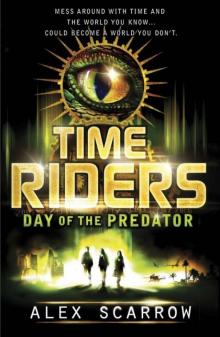 Day of the Predator
Day of the Predator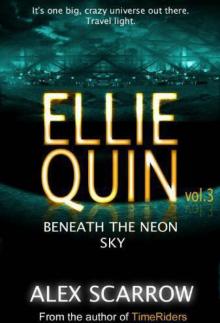 Ellie Quin Book 3: Beneath the Neon Sky
Ellie Quin Book 3: Beneath the Neon Sky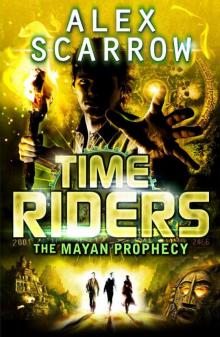 The Mayan Prophecy
The Mayan Prophecy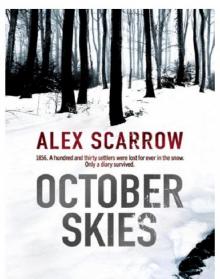 October Skies
October Skies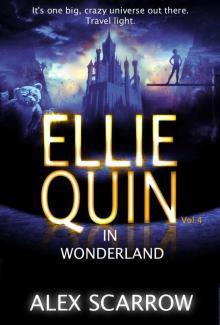 Ellie Quin Episode 4: Ellie Quin in WonderLand (The Ellie Quin Series)
Ellie Quin Episode 4: Ellie Quin in WonderLand (The Ellie Quin Series)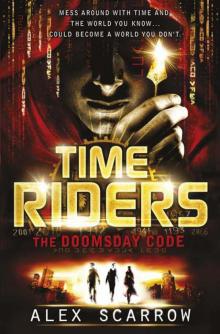 Time Riders
Time Riders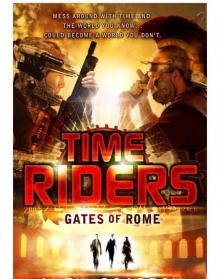 Gates of Rome
Gates of Rome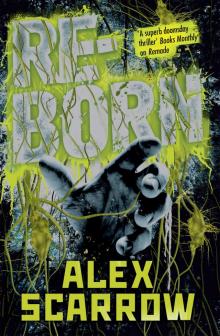 Reborn
Reborn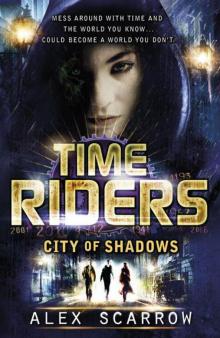 City of Shadows
City of Shadows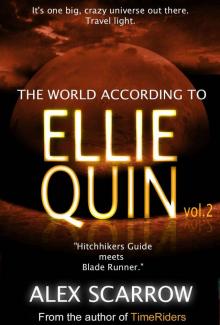 Ellie Quin Book 2: The World According to Ellie Quin (The Ellie Quin Series)
Ellie Quin Book 2: The World According to Ellie Quin (The Ellie Quin Series)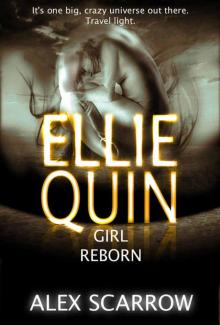 Ellie Quin Episode 5: A Girl Reborn
Ellie Quin Episode 5: A Girl Reborn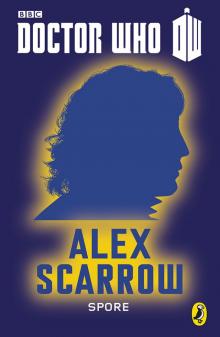 Spore
Spore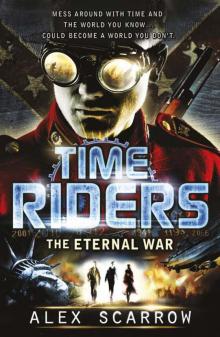 The Eternal War
The Eternal War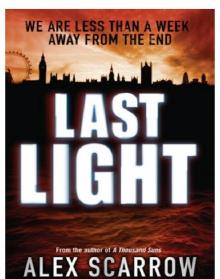 Last Light
Last Light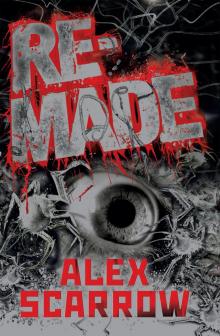 Remade
Remade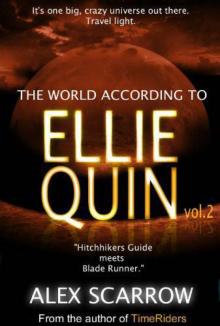 Ellie Quin Book 2: The World According to Ellie Quin
Ellie Quin Book 2: The World According to Ellie Quin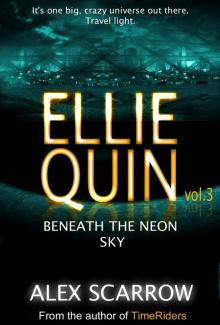 Ellie Quin Book 3: Beneath the Neon Sky (The Ellie Quin Series)
Ellie Quin Book 3: Beneath the Neon Sky (The Ellie Quin Series)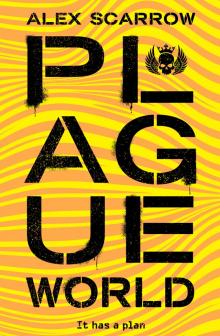 Plague World
Plague World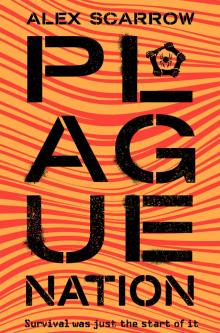 Plague Nation
Plague Nation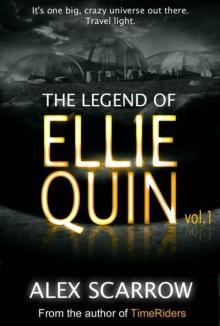 Ellie Quin Book 01: The Legend of Ellie Quin
Ellie Quin Book 01: The Legend of Ellie Quin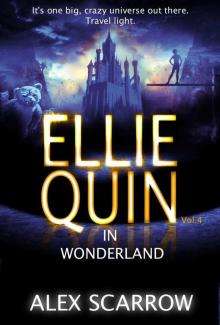 Ellie Quin - 04 - Ellie Quin in WonderLand
Ellie Quin - 04 - Ellie Quin in WonderLand No Escape
No Escape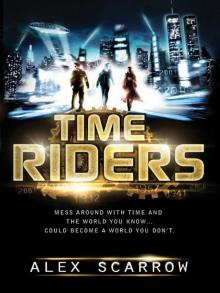 TimeRiders
TimeRiders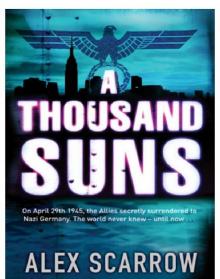 A Thousand Suns
A Thousand Suns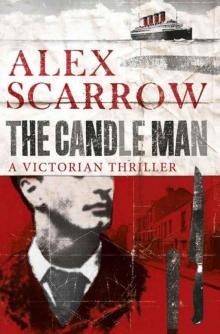 The Candle Man
The Candle Man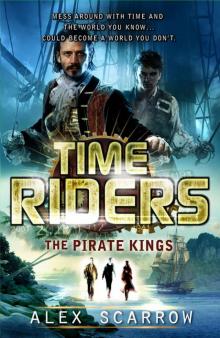 The Pirate Kings
The Pirate Kings Burning Truth: An Edge-0f-The-Seat British Crime Thriller (DCI BOYD CRIME THRILLERS Book3) (DCI BOYD CRIME SERIES)
Burning Truth: An Edge-0f-The-Seat British Crime Thriller (DCI BOYD CRIME THRILLERS Book3) (DCI BOYD CRIME SERIES) Day of the Predator tr-2
Day of the Predator tr-2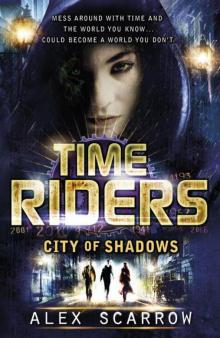 City of Shadows tr-6
City of Shadows tr-6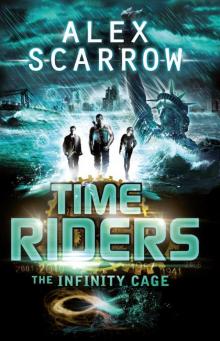 TimeRiders: The Infinity Cage (book 9)
TimeRiders: The Infinity Cage (book 9)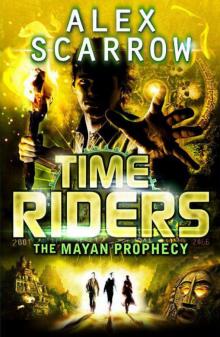 The mayan prophecy (Timeriders # 8)
The mayan prophecy (Timeriders # 8)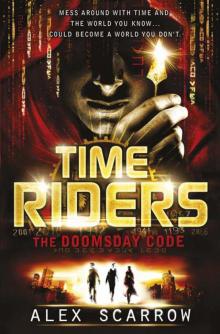 TimeRiders: The Doomsday Code (Book 3)
TimeRiders: The Doomsday Code (Book 3)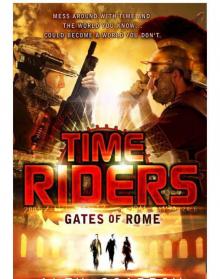 Gates of Rome tr-5
Gates of Rome tr-5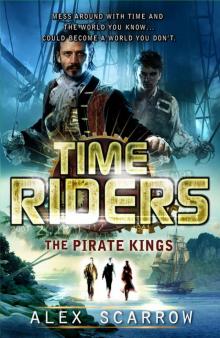 TimeRiders: The Pirate Kings (Book 7)
TimeRiders: The Pirate Kings (Book 7)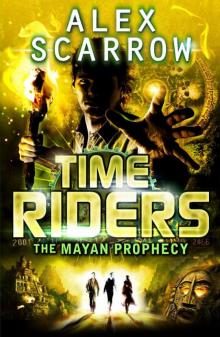 TimeRiders: The Mayan Prophecy (Book 8)
TimeRiders: The Mayan Prophecy (Book 8)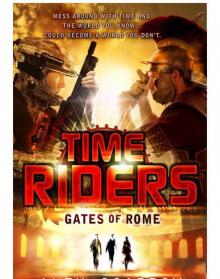 TimeRiders 05 - Gates of Rome
TimeRiders 05 - Gates of Rome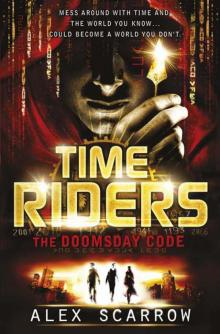 The Doomsday Code tr-3
The Doomsday Code tr-3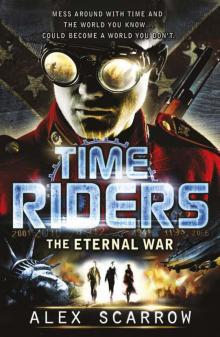 The Eternal War tr-4
The Eternal War tr-4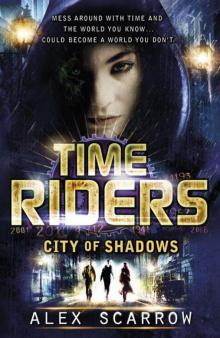 TimeRiders: City of Shadows (Book 6)
TimeRiders: City of Shadows (Book 6)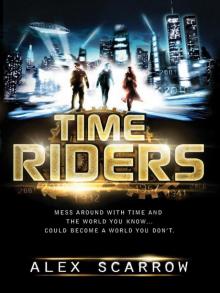 Time Riders tr-1
Time Riders tr-1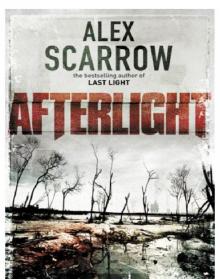 Afterlight
Afterlight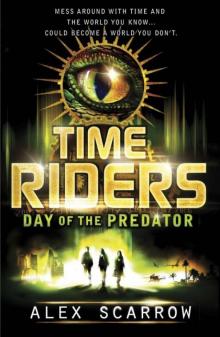 TimeRiders, Day of the Predator
TimeRiders, Day of the Predator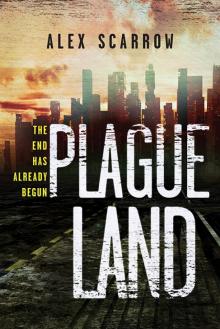 Plague Land Series, Book 1
Plague Land Series, Book 1